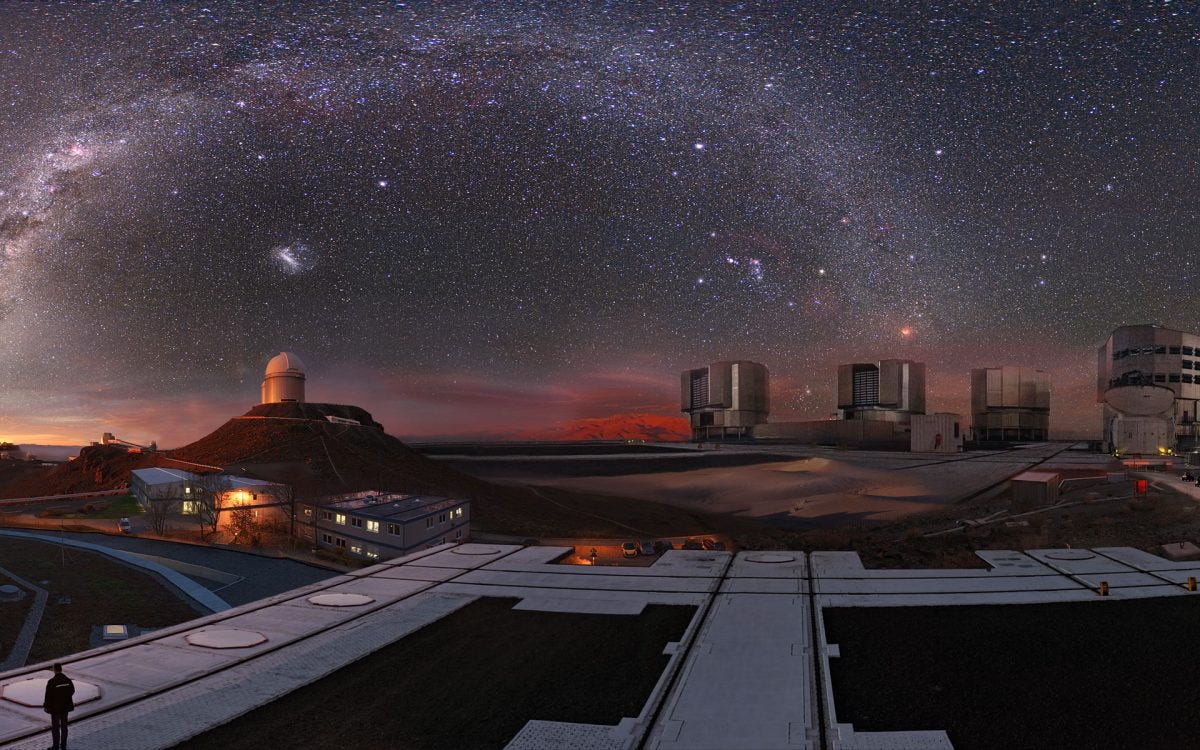"Detecting Aliens is Like Imagining a Color We've Never Seen"
Today’s stories include: The mysterious Great Attractor that’s pulling us in and With brains like ours, why did prehistoric humans wait millennia to start civilization?
The Galactic Center As Seen In X-rays By The Chandra Observatory, reports Space Ref. "X-rays detected by the Chandra X-ray Observatory expose a wealth of exotic objects and high-energy features. In this 2009 image of the region around the Galactic Center, pink represents lower energy X-rays and blue indicates higher energy. A supermassive black hole – some four million times more massive than the Sun – resides within the bright region in the lower right
The Pentagon says it hasn’t found aliens — but it does have a plan. "In our research, ARRO has found no credible evidence thus far of extraterrestrial activity, off-world technology or objects that defy the known laws of physics,” said Sean Kirkpatrick, head of the Department of Defense’s All-domain Anomaly Resolution Office (ARRO). However, there is a plan in place if alien activity is ever discovered."
Why it's so hard to look for evidence of aliens, explores The Week. "How do we contend with the truly alien?" asked Sarah Johnson, an associate professor at Georgetown University. "It's one of the biggest challenges we have, like imagining a color we've never seen."
James Webb peers into nearby dwarf galaxy, sheds light on planetary evolution during 'Cosmic Noon'--NASA's $10 billion space observatory continues to uncover the mysteries of the cosmos.
The mysterious Great Attractor that’s pulling us in, reports Paul Sutter for Ars Technica. "We're headed toward something we can't clearly see—and we'll never get there."
Tiny Jets on the Sun Power the Colossal Solar Wind--A new analysis argues that ubiquitous eruptions in the sun’s corona explain the vast flow of charged particles seen streaming out through the solar system, reports Theo Nicitopoulos for Quanta.
How “bound together” is our Universe?--From quarks and gluons to giant galaxy clusters, everything that exists in our Universe is determined by what is (and isn't) bound together, explores Big Think. "The answer might surprise you and being both more, and less, than you ever imagined."
JWST spots planetary building blocks in a surprising galaxy, reports Nature. Planets might be more common throughout the Universe than previously thought, suggest results from the James Webb Space Telescope. “I think the discovery space is just infinite. Hands down, we’re ready for the next generation of astrophysics,” observes Stefanie Milam, deputy project scientist for JWST planetary science at NASA’s Goddard Space Flight Center
The sapient paradox: With brains like ours, why did prehistoric humans wait millennia to start civilization? explores Big Think.
Plan to spot neutrinos from the big bang would transform cosmology--If we could detect them, cosmic neutrinos would paint a picture of the universe in the instant after it began. Physicist Martin Bauer has come up with plan to do just that, reports New Scientist.
The Six Moons Most Likely to Host Life in Our Solar System--Vast quantities of liquid water may exist on moons of Jupiter, Saturn and Neptune, making life possible there, too, reports Scientific American.
Alien life 'more likely to be Terminator-style robots than ET'. Astrophysicist Seth Shostak believes humans should be looking for `other Mercurys' instead of `other Earths' to find AI aliens, but it has also been said that no biological entities would live long enough to get to Earth.
Curated by The Galaxy Report Editorial Staff




